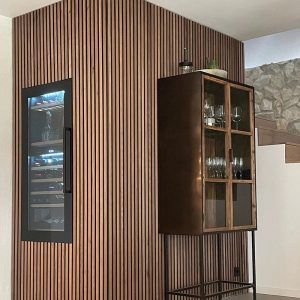Understanding RV Parks
An RV park is a dedicated area designed for recreational vehicles, providing essential amenities and services for travelers seeking a camping experience. These parks often feature various types of sites, from basic grounds to more developed spaces with full hookups for electricity and water. Campgrounds within RV parks typically offer easy access to recreational trails, allowing visitors to explore the surrounding nature. The combination of facilities and scenic locations makes RV parks a popular choice for outdoor enthusiasts looking for both comfort and adventure while camping.

What is an RV Park?
An RV park is a specially designated area that caters to recreational vehicles and their occupants. These parks provide campers with essential amenities such as picnic areas, restrooms, and electrical hookups. Many RV parks offer a range of outdoor activities, allowing visitors to enjoy the natural surroundings. Features like pavilions often serve as gathering spots for social activities and events within the community.
Types of RV Parks
RV parks come in various styles to cater to different preferences and needs. Some parks, like those found at John Bryan State Park, focus on providing a more rustic experience, allowing visitors to immerse themselves in nature. These parks often feature well-maintained trails for hiking and exploring the surrounding landscape. Basic amenities typically include electric hookups, water access, and sometimes a communal gathering area for guests to relax.
Choosing the Right RV Park
Finding the ideal RV park involves considering several key factors to enhance your outdoor adventure experience. A well-located RV park provides easy access to local attractions and natural wonders, making it convenient for exploration. The amenities and services offered at each site can greatly influence your stay, with options ranging from basic hookups to luxurious facilities. Parks like Baywood RV Park often feature seasonal park welcomes that cater to visitors seeking both relaxation and recreation. Careful evaluation of these elements will help ensure that your RV park choice aligns perfectly with your travel expectations and needs.
Location and Accessibility
- Proximity to major highways for easy travel
- Nearby attractions for exploring local sites
- Scenic views to enhance the camping experience
- Safe and peaceful environment for relaxation
Pricing and Reservations
Understanding the average costs of an RV park stay is essential for wonder campers planning their trips. Prices can vary significantly depending on location, amenities offered, and the time of year, especially during the peak camping season. Many RV parks provide easy access to nearby attractions and local attractions, contributing to their overall value. Leisure travelers should consider the costs associated with reservations and any extra fees, which may influence their choice of park. By evaluating these factors, campers can enjoy a fulfilling adventure without overspending.
Average Costs of RV Park Stay
The cost of staying at an RV park can vary widely based on location and amenities. Parks situated in popular areas or near attractions often charge higher rates. For example, an RV park located by a scenic lake may command a premium due to its beautiful views and recreational opportunities. Conversely, parks in less frequented areas may offer more budget-friendly options while still providing essential services.
How to Make Reservations
Making reservations at an RV park can be a straightforward process if you know what to look for. Many parks offer online booking options through their websites, allowing you to view available sites, prices, and on-site amenities like pools, laundry facilities, and recreational areas. Always check for any specific requirements or restrictions, such as pet policies or maximum stay limits.
- Determine your travel dates and preferred RV park location before starting your search.
- Compare prices and amenities across multiple RV parks to find the best fit for your needs.
- Read reviews from previous visitors to gauge their experiences and satisfaction levels.
- Check for any promotional deals or discounts that may apply, particularly for extended stays.
Conclusion
Finding the perfect RV park can transform your travel experience into a memorable adventure. An RV park serves as a temporary home away from home, offering essential amenities and services to enhance your stay. For instance, Stillwater Campground Bradford is an excellent choice for those looking to explore local attractions while enjoying nature. Selecting the right RV park involves considering location, accessibility, and available facilities. By prioritizing your preferences and researching options, you can ensure a comfortable stay that meets all your travel needs.





